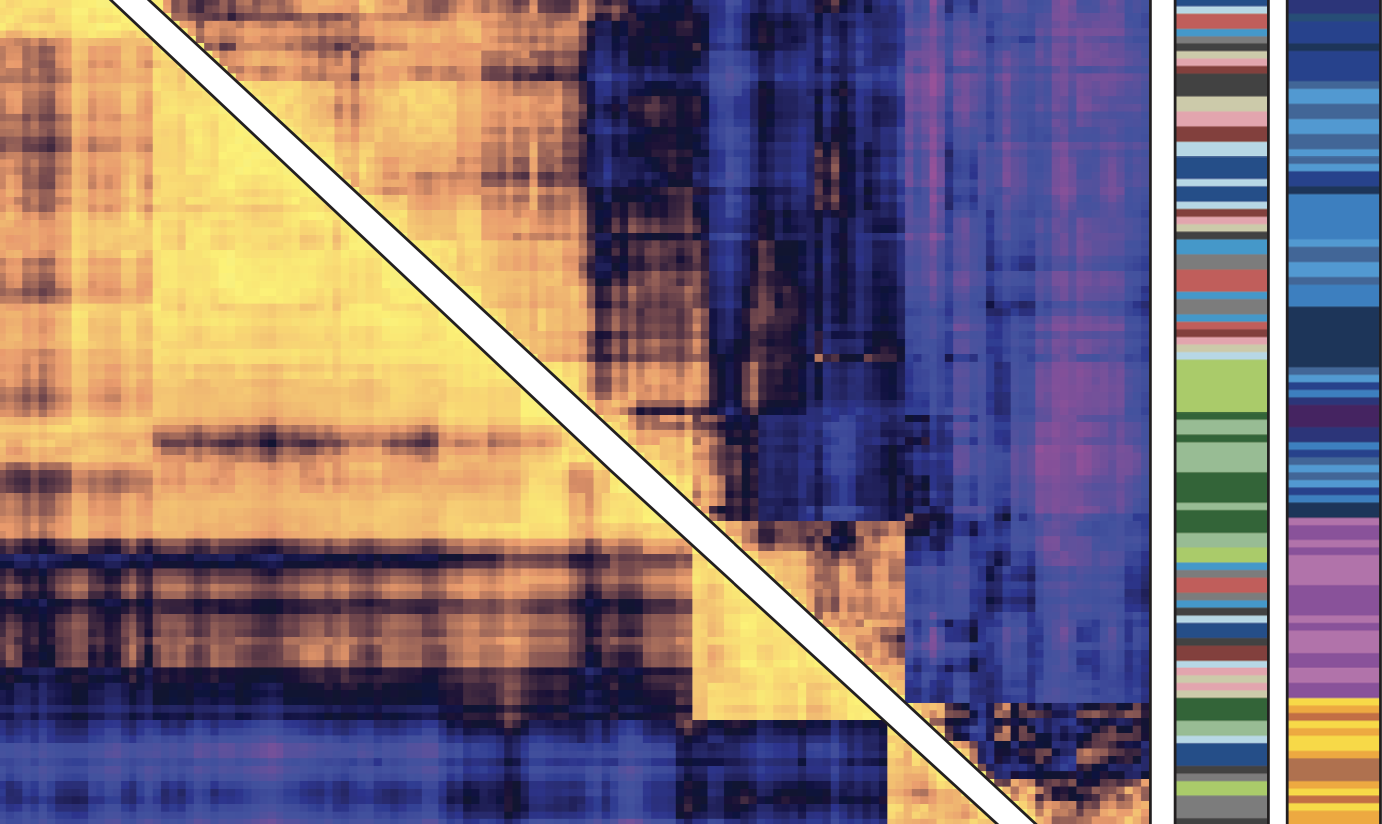
Researchers from the Harvard Department of Stem Cell and Regenerative Biology(HSCRB) have created a novel computational method for studying the inner workings of single cells revealing previously unknown gene regulatory networks. The method utilizes combined measurements of chromatin accessibility and its effect on gene expression on a single cell level. A paper describing the new research is published in Cell Genomics.
Jason Buenrostro, PhD, senior author on the study and an assistant professor in HSCRB, focuses on understanding gene regulation and the downstream consequences on cell development. Several years ago, he developed a new tool, ATAC-seq (Assay for Transposase-Accessible Chromatin using sequencing), which reveals which parts of the DNA are unwound and accessible to proteins. In this paper, the Buenrostro lab paired single-cell ATAC-seq with RNA-sequencing to reveal a new method for revealing gene regulatory networks.
Linking ATAC-seq and RNA-seq
“Single cell ATAC-seq is an important method that can be used to understand how cell types are established and how cells respond to changes in their environment ” said first author Vinay Kartha, PhD, former post-doc in the Buenrostro lab.
The team studied resting and stimulated blood cells exposed to a variety of different agents that mimic pathogens by eliciting an immune response, applying multi-omics to profile their changes over time.
As a first step, the researchers created two data sets. The first was derived using single-cell ATAC-seq to identify open or closed chromatin regions throughout the DNA of the cells. They also performed single-cell RNA sequencing on the cells. Together, these data sets provided information on regions of chromatin accessibility and of gene expression. Using a newly developed statistical framework, the team was able to pair these data sets, piece together whether gain or loss of accessibility in a specific chromatin region corresponded with gain or loss of expression of a nearby gene, and identify important subsets of proteins called transcription factors that controlled these key events within the cell.
“Integrating these two layers of information led us to understand which regions were open and closed and ask if there were certain proteins, like transcription factors, which might turn on or turn off the expression of a certain gene in the context of immunogenic response,” said Kartha. “In this way we were able to reveal a gene regulatory network across different types of blood cells that was unknown previously.”
Homing in on Influential Gene Connections
After connecting the dots between chromatin accessibility and gene expression, the researchers used this information to distill down which transcription factor genes exert the heaviest control on gene expression.
“Once we paired the ATAC-seq and RNA-seq data and observed changes in gene expression, we noticed that there were some genes that had a relatively higher number of chromatin accessibility elements that are linked with expression change compared to most genes,” said Kartha. The small list of genes had a high amount of regulatory control.
Next, Buenrostro’s team looked to find overlap between single nucleotide variants in these genes and regulatory elements previously identified in a variety of immune diseases, like lupus, arthritis, and inflammatory bowel disease.
“We found that we could separate the different diseases based on the specific transcription factors that were observed to be active in each cell type,” said Kartha. For example, complications like asthma and allergies generally involve T-cell dysfunction, and the researchers found a subset of T-cell-specific chromatin accessibility domains and transcription factors that implicated genetic variants specific to these conditions. “It’s a nice way of looking at it through the lens of disease, looking at all of these transcription factor-gene relationships, and seeing which of those are directly relevant to the disease.”
Finding New Disease Targets
“Our approach provides a generalizable method for deducing gene regulatory networks using single-cell data , allowing one to determine the major control genes and their associated transcription factors that are responsible for the change overall,” says Buenrostro. “It tells you what the major activators and repressors of the change are.”
Moving forward, this technique helps reduce complicated data sets to a few activators or repressors in any given disease. “We hope to establish this method as a means for making it easier to nominate candidate transcription factors that are key activators and key repressors and then go back in the lab to see if they can be modulated to treat disease,” he added.
Read more
Source article: Kartha VK, Duarte FM, et al. (2022). Functional Inference of Gene Regulation using Single-Cell Multi-Omics. Cell Genomics. DOI:https://doi.org/10.1016/j.xgen.2022.100166
Funding: This work was supported by funding from the National Heart, Lung, and Blood Institute (Award number DP2-HL151353-01)
